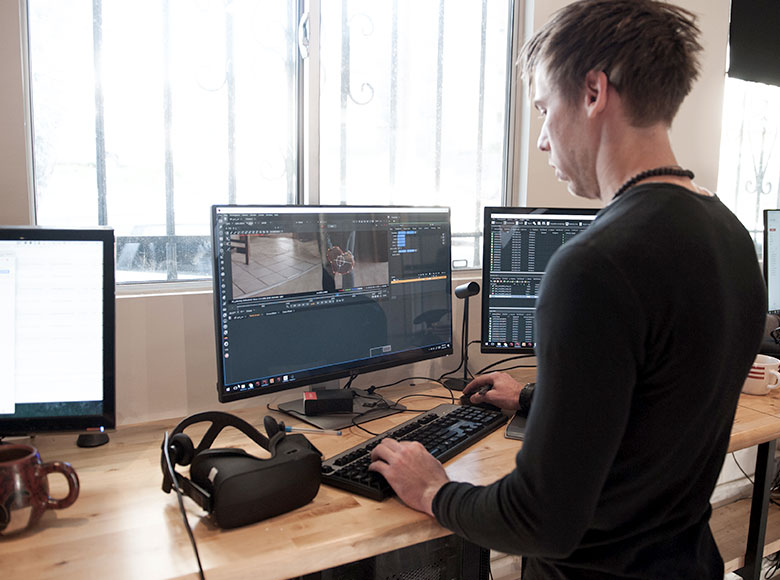

Dealing with 3D scans in Zbrush and Mari.Neutral light rigs and natural light rigs based on HDRI.Look-development strategies, from blocking to polishing.Painting colour, specular, bump, displacement, sub surface scattering and isolation masks.
 Texture projections in Maya, Mari and Photoshop. Photo shooting to gather texture references. Professional UV mapping based on multi UDIMs. Xuan will also describe how to create a daily template to showcase the work on either a demo reel or for review.Specific topics that will be covered: Throughout the course Xuan will also explain how to set up a photo shoot to gather texture references. This course will cover both hard-surface objects and more organic objects like the course provided human head. Students will learn how to control the various texture channels and how to paint texture maps for each to get the desired effect. Students will learn how to create different attributes on a variety of materials using the most current techniques for VFX projects. Like its commercial counterpart, Mari is officially supported on Max OS X 10.9.5/Mavericks or higher Windows 7 64-bit or higher, and Linux 64-bit (CentOS/RHEL 6). MARI Non-commercial is available for free download now.The purpose of this course is to teach students how to texture a realistic asset from scratch. Working within those parameters, however, the functionality is said to be the same as the full version. The free version's project files are also incompatible with the commercial version of Mari. Export texture resolution is limted to 4K and 16 bits per channel export formats are limited to PSD, PNG, TGA, and JPG/JPEG (TIF/TIFF, HDR, DDS and PTX are not supported) Python scripting and Session Scripts are disabled UV texture patches are limited to six per object custom shaders are unsupported, and the software can work with a maximum of five objects at once. Is there a catch? Well, yes - the free version is somewhat feature-limited.
Texture projections in Maya, Mari and Photoshop. Photo shooting to gather texture references. Professional UV mapping based on multi UDIMs. Xuan will also describe how to create a daily template to showcase the work on either a demo reel or for review.Specific topics that will be covered: Throughout the course Xuan will also explain how to set up a photo shoot to gather texture references. This course will cover both hard-surface objects and more organic objects like the course provided human head. Students will learn how to control the various texture channels and how to paint texture maps for each to get the desired effect. Students will learn how to create different attributes on a variety of materials using the most current techniques for VFX projects. Like its commercial counterpart, Mari is officially supported on Max OS X 10.9.5/Mavericks or higher Windows 7 64-bit or higher, and Linux 64-bit (CentOS/RHEL 6). MARI Non-commercial is available for free download now.The purpose of this course is to teach students how to texture a realistic asset from scratch. Working within those parameters, however, the functionality is said to be the same as the full version. The free version's project files are also incompatible with the commercial version of Mari. Export texture resolution is limted to 4K and 16 bits per channel export formats are limited to PSD, PNG, TGA, and JPG/JPEG (TIF/TIFF, HDR, DDS and PTX are not supported) Python scripting and Session Scripts are disabled UV texture patches are limited to six per object custom shaders are unsupported, and the software can work with a maximum of five objects at once. Is there a catch? Well, yes - the free version is somewhat feature-limited. 
"They can work on personal projects such as making their demo reels stand out from the crowd, or simply use our extensive free tutorials to thoroughly learn the software - for as long as it takes." "With our non-commercial products, we want to give artists all the time they need to get familiar with the software," said The Foundry's chief product officer, Andy Whitmore, in a prepared statement. The release of Mari Non-commercial follows the launch at NAB last year of Nuke Non-commercial. The company said artists can use Mari Non-commercial as a learning tool, as well as for working on personal projects including material for demo reels. The Foundry's texture-painting software Mari is the latest VFX tool to be released in a free, unwatermarked version for non-commercial use.







 0 kommentar(er)
0 kommentar(er)
